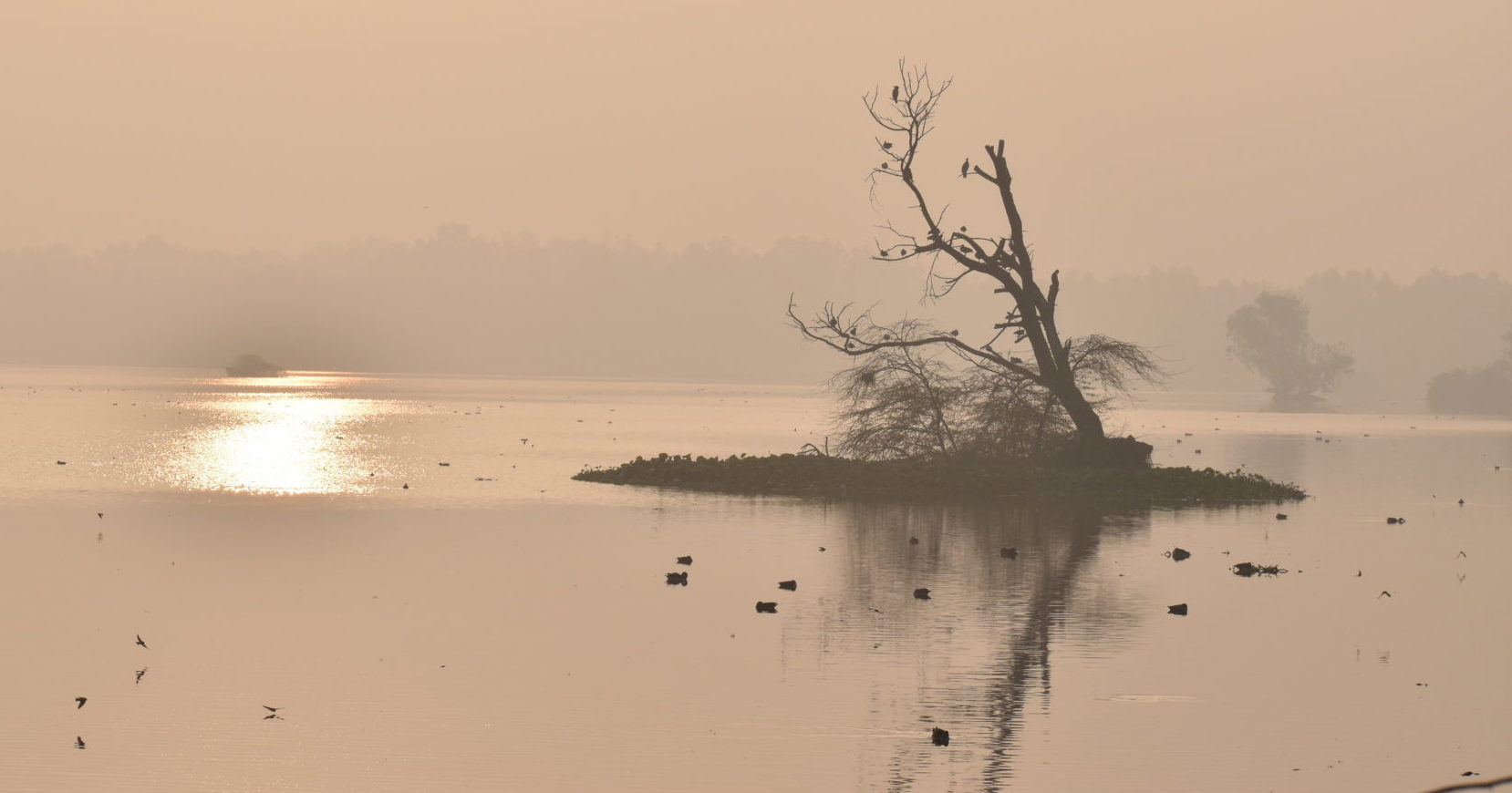
Assessment of Ottu Lake as a potential Ramsar site in Sirsa, Haryana
-
Capacity development
-
Integrated management planning
-
Wetland values, status and trends
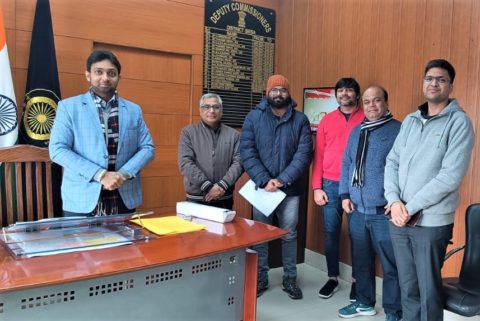 Wetlands International South Asia is a knowledge partner with the State Wetlands Authority across the country on matters concerning the conservation and management of wetlands. A meeting of the District Administration of Sirsa, Haryana, and the Wetlands International South Asia was held on 5 January 2023. Mr. Parth Gupta, IAS (Deputy Commissioner, District Sirsa) advocated for the designation of the Ottu Lake as a Ramsar site informing that the site attracts several waterfowl species and serves as a refuge to different endangered and near-threatened bird species. He expressed keen interest in initiating conservation research and in up-taking its management to develop it into a birding hot-spot, The team from Wetlands International South Asia, explained and emphasised that a site is assessed on nine criteria for its designation as a Ramsar site or a wetland of International Importance. It is also essential that the wetland sustains ecosystem services – provisioning services, regulating services, supporting services, and cultural services. Mr. Yash Jaluka, IAS (Assistant Commissioner, District Sirsa) accompanied the team from Wetlands International South Asia to the field site and led the on-site discussions.
Wetlands International South Asia is a knowledge partner with the State Wetlands Authority across the country on matters concerning the conservation and management of wetlands. A meeting of the District Administration of Sirsa, Haryana, and the Wetlands International South Asia was held on 5 January 2023. Mr. Parth Gupta, IAS (Deputy Commissioner, District Sirsa) advocated for the designation of the Ottu Lake as a Ramsar site informing that the site attracts several waterfowl species and serves as a refuge to different endangered and near-threatened bird species. He expressed keen interest in initiating conservation research and in up-taking its management to develop it into a birding hot-spot, The team from Wetlands International South Asia, explained and emphasised that a site is assessed on nine criteria for its designation as a Ramsar site or a wetland of International Importance. It is also essential that the wetland sustains ecosystem services – provisioning services, regulating services, supporting services, and cultural services. Mr. Yash Jaluka, IAS (Assistant Commissioner, District Sirsa) accompanied the team from Wetlands International South Asia to the field site and led the on-site discussions.
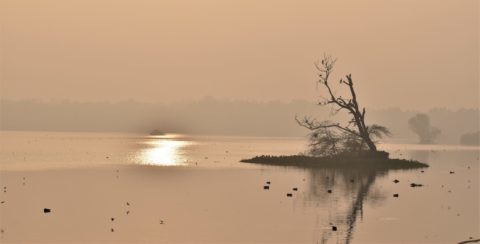 Photo- Ravi Prakash
Photo- Ravi Prakash
Ottu Lake is located at a distance of about 12 km west of Sirsa district in Haryana. It is a perennial lake formed due to construction of weir on Ghaggar River in 1896-97. Haryana has a semiarid climate and the predominant vegetation type is the Tropical Deciduous Forests. The water level of the lake increases in rainy season. It provides water for irrigation to the neighbouring state, Rajasthan.
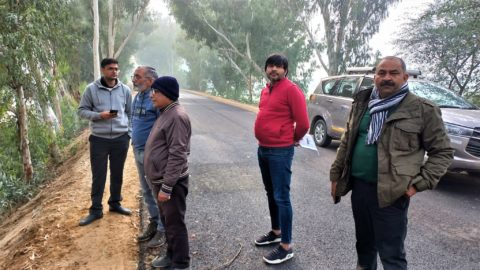 Photo- Zafar Abbas
Photo- Zafar Abbas
Field visit to the Ottu Lake was conducted on 5 and 6 January 2023. Along with the team from Wetlands International South Asia personnel from different government departments including Forest department, Irrigation department and the Fisheries department were present. Dr Sanjeev K. Goyal and Dr Vivek Goyal who are local bird watchers also accompanied the team.
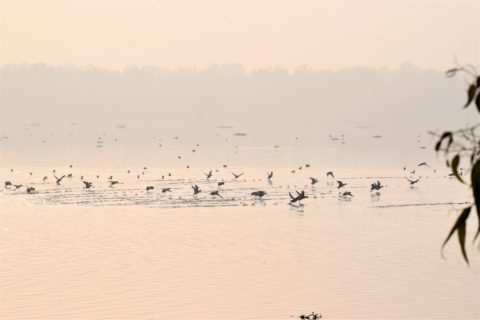
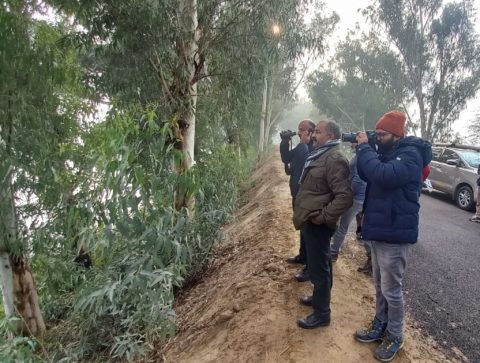 Photo- Ravi Prakash Photo- Zafar Abbas
Photo- Ravi Prakash Photo- Zafar Abbas
Observations were made on wetlands ecosystem services, species diversity and richness and threats. Existing literature reports occurrence of more than 200 bird species. This includes seven Near Threatened and Two Vulnerable migratory bird species. The wetland is also a refuge to the Indian Tent Turtle, listed as Schedule I species under the Indian Wild Life (Protection) Act, 1972. Communities living in the vicinity of the wetland are dependent on it largely for abstracting water for farming, growing water-chestnut and for bathing their cattle.
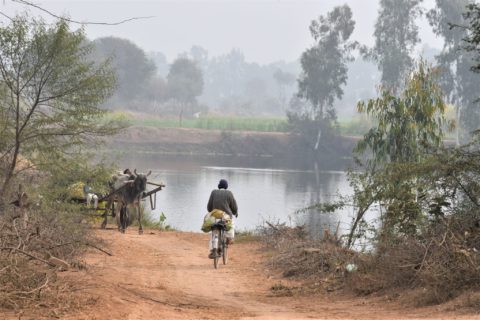 Photo – Ravi Prakash
Photo – Ravi Prakash
The irrigation department leases fishing in the lake on an annual basis. During the field visit it was recorded that the STP at Shamshabad Patti, Kelnian village is discharging treated wastewater of Sirsa city into River Ghaggar at Jhoranali village. Foul odour and froth indicated it as a potential pollution source to the wetland. Interaction with the locals revealed incidents of fish kill in the wetland and attributed it to the discharge of sewage from this drain. Thus, water quality monitoring of such drains is required to verify the claims of residents and further assess the interventions required. In recent times mud collection is also being leased by the government for three months from April to June, which may have adverse impacts on the hydrological integrity and the wetland dependent biodiversity.
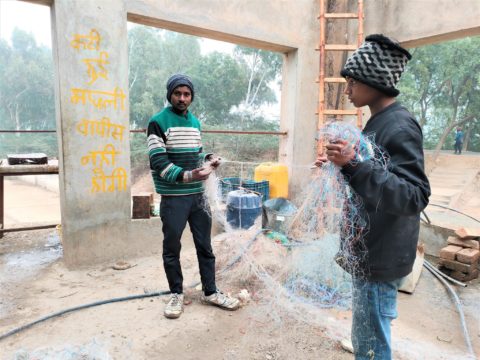 Photo – Zafar Abbas
Photo – Zafar Abbas
It is proposed that in the coming months more intensive filed studies will be taken up. Training workshops will be held to build the capacity of local stakeholders so that an Integrated Wetlands Management Plan can be developed for the Ottu Lake.
